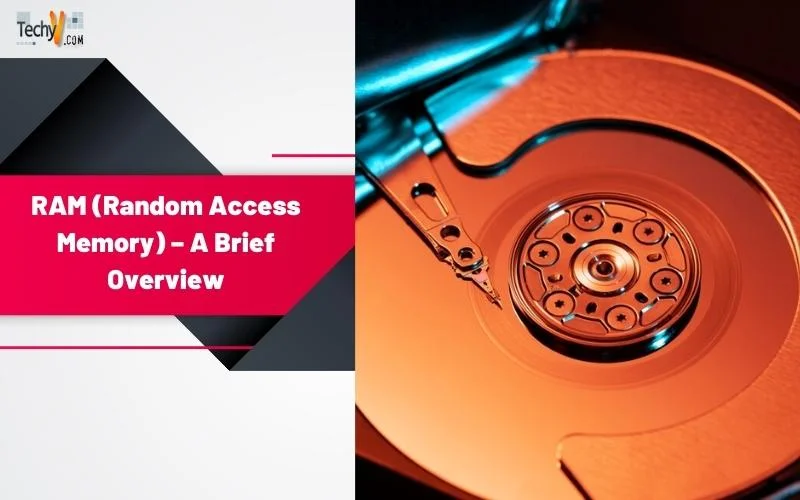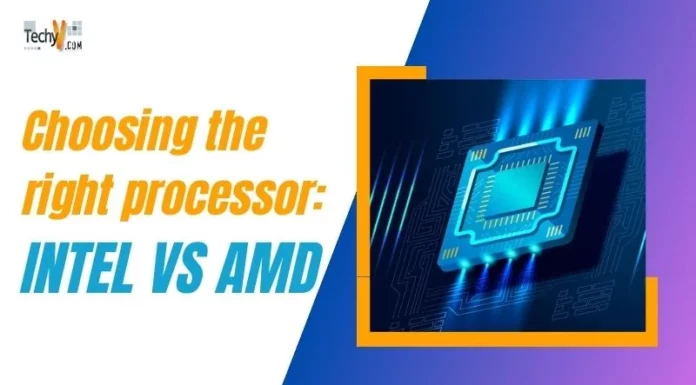RAM (Random Access Memory) – A Brief Overview
Random Access Memory, abbreviated as RAM, is a common form of data storage in computers. At present, it is generally used in form of several integrated circuits, which enable the user to access the stored data in any “random” order.
The word “random” has been used to convey the meaning that one can access and return any data piece at any time, irrespective of its location and relation with the previously accessed data piece. The term ‘RAM’ is, however, used more commonly to refer to volatile memory types; like DRAM modules, wherein all the information gets lost soon after the electric supply is turned off. This is very different from non-volatile ‘flash memory’ and hard disks, which have the capability to retain the data even after the computer shuts down suddenly.
There are many different kinds of RAM chips that come in form of “stick”, which is nothing but a tiny circuit board. Many of those RAM sticks fit in ‘Banks’ on the computer’s motherboard. The more the number of these sticks are, the better is the storage capacity and performance of RAM.
RAM – History
Developed during 1949-1952, the MCM (Magnetic Core Memory) was the earliest form of the pervasive, writable RAM. MCM was used extensively for data storage in majority of computers across the world until late 1960s and the early 1970s. This was when the dynamic and static integrated circuits of RAM were first introduced in the market. Prior to this, the primary memory functions, which is accounting to thousands or hundreds of bits, were implemented by computers using RAM’s predecessors, such as delay line memory, relays, and vacuum tube arrangement. Faster and smaller memories, like registers and random access register bank, made use of latches that were made using discrete transistors and triodes of the vacuum tubes. Quite often, address decoders were used to drive matrices of semiconductor diodes, which in turn were used to develop integrated circuits of ROM (Read-Only Memory).
Types of RAM – Past, Present & Future
RAM is usually classified based on its speed and architecture. The modern versions of the writable RAM typically store data or bits either as capacitor charge (Flash, EEPROM, EPROM, and DRAM) or in a flip-flop state (SRAM). Some kinds of RAM also feature a specially designed circuitry that uses error correction code or parity bits to identify and/or correct the ‘memory errors’ or the ‘random faults’ present in the data. On the other hand, ROM, the read-only memory, permanently enables or disables the selected transistors by using the metal mask, rather than storing charge on them. DIMM and SIMM modules are good examples.

Depending on whether or not the data is retained permanently, RAM is classified into 2 types – Volatile and Non-Volatile. The RAM types that fall under these two categories are as follows –
- Volatile Computer Memory: The historical versions or RAM predecessors that were volatile includes William’s tube, Selectron tube, and the delay line memory. The current RAM versions under this category include SRAM and DRAM (DDR SDRAM). The upcoming memory types are TT-RAM, Z-RAM, and T-RAM.
- Non-Volatile Computer Memory Types: The historical versions in this category include Twister memory, Bubble Memory, Drum Memory, Magnetic Core Memory, and the Plated Wire memory. The present day non-volatile RAM types are ROM (EEPROM, EPROM, and PROM), Flash Memory, MRAM, FeRAM, and PRAM. The RAM types that will soon be introduced under the category are SONOS, CBRAM, NRAM, RRAM, Millipede, and Racetrack Memory.
Besides, RAM can also be classified based on its speed, usage, and functionality into 4 categories– Asynchronous, Synchronous, Graphics, and Rambus. The various kinds of RAM that fall under each of these 4 categories are as follows –
- Asynchronous – EDO RAM, FPM RAM
- Synchronous – DDR SDRAM, SDRAM, DDR 2, Mobile DDR, DDR 3 SDRAM, and DDR 4 SDRAM
- Graphics – DDR 2, DDR3, GDDR3, VRAM, GDDR4, GDDR5
- Rambus – XDR DRAM, RDRAM, XDR2 DRAM.
A brief overview and history of each of the major types of RAM is given below.
DRAM (Dynamic Random Access Memory)
It stores every data bit in a different capacitor in its integrated circuit. The stored information tends to fade eventually owing to charge leakage from capacitors and hence needs to be refreshed periodically. This is why it is said to be ‘dynamic’ in nature. The main RAM present in your PC, Xbox 360, Wii, laptop, Play station, workstation, or notebook is nothing but DRAM.
A hard-wired DRAM was first incorporated into ‘Aquarius’, a cryptanalytic machine that was used during the WWII, at Bletchley Park. A distinct memory cell, called the ‘Farber-Schlig cell’, functioning of similar principles was created in the year 1964 by Eugene S. and Arnold Farber of IBM. An advanced 16-bit dynamic memory chip, comprising of 4 diodes, 64 resistors, and 80 transistors, was made by Benjamin A. of IBM in 1965. Finally, DRAM was introduced in 1966 by the highly acclaimed researcher, Dr. R. Dennard of the TJW Research Center at IBM. DRAM was patented in 1968. In 1969, Intel made 3-transistor DRAM (Intel 1102) for Honeywell. However, it was Intel 1103 that became commercially available. Mostek MK4096, the 1st DRAM containing multiplexed column and row address lines, was made by R. Proebsting in 1973.
SDRAM (Synchronous DRAM)
It is a kind of DRAM provided with a special synchronous interface. Unlike DRAM, which responds instantly to the control input changes due to its asynchronous interface, SDRAM synchronizes itself with the system bus of the computer and responds to control input only after receiving the ‘clock signal’.
Although SDRAM was used in early processors of Intel during the 1970s, it became commercially accepted across the world in 1993, after the introduction of KM48SL2000 SDRAM by Samsung. However, the earlier versions had additional logic which made them a little slower than the contemporary EDO DRAM. The present-day SDRAMs are also made as per the JEDEC standards. Since 2007, the 168-pin DIMMs and 184-pin DDR memories are not used in PCs. Instead, majority of PCs use DDR2 products. Newer versions; DDR3 and DDR4, are also becoming popular.
SDRAM’s earliest version featured single data rates and hence was slower than their DDR variants. The four different generations of SDRAM and their evolution with time is detailed as follows:
- DDR SDRAM (DDR1)
DDR SDRAM/DDR1 features a double-data rate interface, which is capable of doubling the minimum write or read unit. That is, every single access to stored data refers to a minimum of 2 consecutive words. The various clock rates exhibited by DDR1 include 133 MHz (DDR-266; 7.5 ns/cycle), 166 MHz (DDR-333; 6 ns/cycle), and 200 MHz (DDR-400; 5 Ns/cycles). Maximum performance is available in DDR-550. DDR1 was formulated as per DRAM parametric Committee, JC 42.3, and was revised and modified by JEDEC’s Board Ballot (JCB-9970), and others. The first release of the product was made in June 2000, followed by a 2nd release in May 2002, and Release ‘C’ in March 2003.
- DDR2 SDRAM
DDR2 SDRAM features a simplified bus protocol that ensures a much higher performance. It carries out the internal operations in units four times wider than SDRAM. That is, the minimum write or read unit is four consecutive words. It was during April-June 2003 that DDR2 was introduced with 2-clock rates – 266 MHz and 200 MHz (PC2-4200 & PC2-3200 respectively). Initially, both these versions could not perform well, as per the DDR specifications owing to their high latency. It was only post-2004 that DDR2 was introduced with much lower latencies, making it competitive to earlier DDR versions.
- DDR3 SDRAM
DDR3; the third generation of SDRAM, doubled the minimum write/read unit further to at least eight consecutive words. It was introduced in the year 2007 and is the current trend in the market. However, it is estimated that although the DDR3 sale will not be able to overtake DDR2 sale by the end of 2010, it will reach 72% by the end of 2011. Introduction of Intel and Phenom II’s Corei7 processors is the major factor responsible for this sudden increase in DDR3 demand.
- DDR4 SDRAM
The proposed successor of DDR3-SDRAM is DDR4. The proposal for DDR4 development was put forward in the year 2008 at the IDF (Intel’s Developer Forum), held in San Francisco. This fourth generation SDRAM is presently in its design phase. It is expected to be released in the market by mid-2012. In contrast to DDR3’s 1.5 V chips, DDR4 chips are anticipated to function at 1.2 V, allowing more than two billion transfers of data each second. The voltage is expected to be lowered to 1.0 V by 2013. Validation of the 40 nm chips of DRAM in 2009 by Samsung is believed to be a significant milestone in the development of DDR4-SDRAM.
- Failed Successors of SDRAM
Apart from DDR, many technologies succeeded SDR-SDRAM. But, unfortunately, they failed and could not sustain a viable share in market. RDRAM (Rambus DRAM), with high price and high latency; SLDRAM, introduced in 1990s; and VCM-SDRAM were three such technologies.
As RAM is used to enhance performance, the amount and type of RAM that a computer’s motherboard is able to support. This should be the main criteria when purchasing a new computer. In the future, non-volatile RAM types made using advanced technologies, like Nano-tube technology, are expected to be introduced in the market.


















